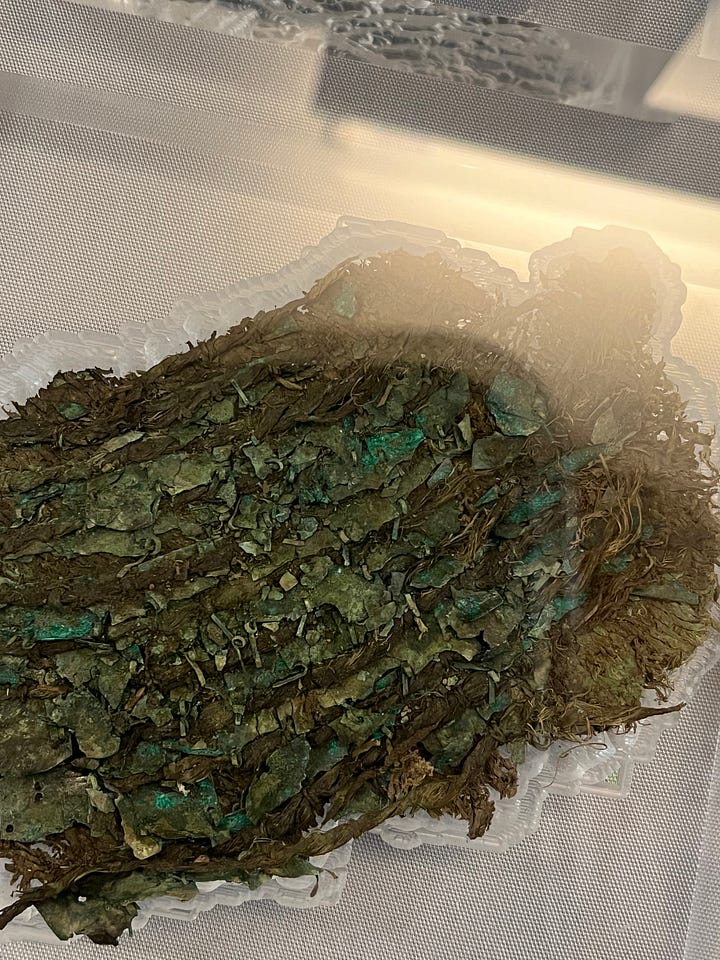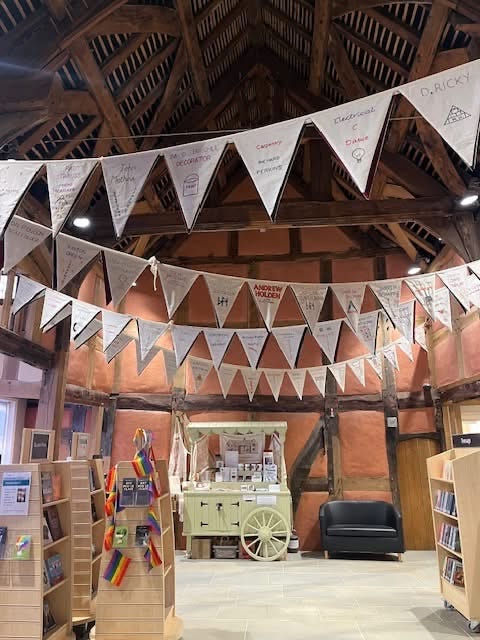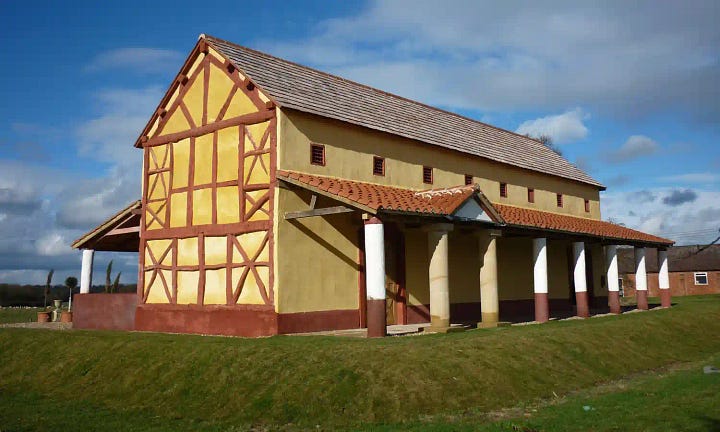[Image Hadrian’s Wall, Creative Commons]
There’s a lot of confusing talk around of ceasefires, truces, and brokered peaces. It’s noticeable that amidst all the claims and counterclaims, there seems little prospect of actual peace between Israel and Iran. Or Russia and Ukraine.
The existence of modern instantaneous communications, alongside faster-than-sound projectiles might make it more tempting for a warring nation to break a supposed truce, getting in a sneaky blow. Apparently, even when a superpower claims ‘the ceasefire is unlimited. It’s going to go forever’, it actually might not. War, war can break out again within a few hours. Being a superpower with bunker busters might not be enough.
None of this is new. Let’s look at an older superpower, the Roman Empire. Fielding the best trained and equipped professional armies in the world, backed up by huge reserves, massive naval support, ground-breaking logistics, transport and communications links, and impregnable fortifications — it was no surprise the legions were rarely bested. And when, inevitably, defeat was dealt to whichever upstart nation thought to defy Rome, the subsequent peace brokered would never be breached. Right?
Wrong. Occasionally the underdog not only left the legions with a sore head, but even broke a peace accord to come back for another round. One such occasion was the Scottish campaign of Emperor Septimius Severus, AD 208-211. As archaeologist Simon Elliott describes it, the campaign was the epitome of “shock and awe”. Initially it seemed to work. Septimius Severus brought 50,000 troops to York, as well as his two sons, Caracalla and Geta, the Empress Julia Domna, his treasury and his whole court.. The troublesome Scottish tribes, the “barbarians who were in revolt and overrunning the country” as reported by the then governor of Britannia, then heard of this army and its armada, and had second thoughts. It is recorded the Caledonians sent peace envoys to York. But the early negotiations failed; the emperor headed north to subjugate the barbarians beyond Hadrian’s Wall.
All around me in the video are the lumps and bumps evidencing the vast legionary fortress at Carpow on Tayside, where Severus housed his thousands of soldiers and sailors. It is thought to have been built thirty years earlier, during the reign of Emperor Commodus, but Severus expanded and renewed the fort, adding a fortified harbour for his huge navy. From here, with his elder son Caracalla, he launched a two-pronged attack deep into the Highlands. The tribesmen were caught between the navy along the east coast, Caracalla with the larger part of the army sealing off the mountains with a string of forts along the Gask Ridge, and Septimius Severus himself leading the rest of his forces into Fife. The Romans experienced foul weather and a difficult terrain, fighting an elusive enemy. The Scots used guerrilla tactics, slipping away into the misty glens and steep crags. Nevertheless, the Romans prevailed. Severus was an experienced campaigner, and the might of the Romans forced the Scots tribes to sue for peace. An accord was reached, and victory proclaimed by the emperor. A peace that would ‘go forever’, he must have hoped. Severus returned to York for the winter, with the campaign apparently over.



But the peace was illusory. By summer AD 210 the native Scots had changed their minds, and raised revolt, breaking the truce. Severus — already an old man — was failing in health. Enraged, and perhaps knowing he was on his deathbed, the emperor ordered his son to carry out a genocidal retaliation against the barbarians, which Caracalla did, with impunity. Had Severus lived, it might well have led, as Simon Elliott argues in his 2018 history Septimius Severus in Scotland, to the permanent incorporation of at least part of Scotland into the Roman empire.
But now something happened that perhaps can be compared to the NATO withdrawal from Afghanistan in 2020. Severus died in February AD 211, in York. His squabbling sons, focussed on securing power in the empire’s capital, withdrew their troops. They raced back to Rome, where things went horribly wrong between the brothers. But that’s a story for another day.
All that was left north of Hadrian’s Wall were crumbling forts, and a deep brooding quiet over the ravaged landscape. Archaeological evidence suggests it took generations for lowland and central Scotland to recover, with land left uncultivated and settlements abandoned.


It was a power vacuum. And we all know what happens to vacuums. As in Afghanistan with the Taliban, so perhaps in lowland Scotland with the Picts. Though it took quite a while — till the end of the third century — for the Romans to realise their mistake in allowing a strong new enemy from the far north to fill the vacuum they had left.
The proof of the peace pudding is so often in the eating. Roman history, as ever, has much to teach us. Beware of proclaiming a premature peace — the conflict might not yet be over.
Book Reviews
During our trip to Italy in May, I found travelling by train to be ideal for catching up on reading. Here are brief reviews of a few books I read and enjoyed.
The Names by Florence Knapp
I love what-if stories, where characters are faced with pathways, leaving the reader to conjecture with alternatives. Never more so than in this beautifully-written debut novel. Cora, wife to a local doctor, gives birth to her second child, a baby boy, in circumstances causing her to make the choice of his name. From this point their lives splinter into three rapidly diverging possibilities.
In some ways reminiscent of Kate Atkinson’s Ursula in Life After Life, this is a superb first novel. The original premise creates a wonderful structure, building and breaking possible lives for Cora and her children, over and over. Highly recommended.
Silverview by John le Carré
I looked forward to this final novel from the consummate thriller writer of my generation, from the moment it was announced. Then I wondered whether knowing it was the last complete le Carré book might somehow spoil my pleasure. Or if the master’s talents had faded near the end.
I needn’t have worried. This is a miracle of a story, and possibly the wisest, most touching and satisfying of all his works. I won’t say more, except to acknowledge that in bookseller Julian Lawdsley, le Carré has created a sublime main character of intelligence, tact and moral fibre. What a wonderful parting gift to his millions of fans!
Pompeii by Robert Harris
It’s difficult to believe this book was published fifteen years ago, or that I’ve now read it at least half a dozen times. I’m an unashamed Harris fan, and read everything he publishes instantly. Having come back from exploring Herculaneum a few weeks ago with a story of my own buzzing, I’m still in awe of this book. It combines Harris’s trademark research with a story so gripping it whacks you over the head — despite us all knowing how it’s going to end. Now that’s what I call writing.
Next question is: can I do the same? Can I conjure a character as engaging as his aquarius (water engineer) Attilius? We’ll have to wait and see. I’m 5k words into A Night Blacker and Darker, with Vesuvius beginning to shower ash and pumice…
My News
I had the best fun on Tuesday this week, in the beautiful Master’s House in Ledbury, Herefordshire. This spectacular Tudor mansion is now the home of Ledbury library. Together with fellow crime writers Linda Mather and Sarah Hilary, I was invited, as part of National Crime Reading Month 2025, to chat about crime writing, our writing processes, and how we envisage our characters. Our super audience asked loads of clever questions — I hope we didn’t disappoint!


Fun at Ledbury library (r/h pic via Linda)
Next week we’re heading north for more research for book 2 in my new Otto Cornelius mystery series, set in Wroxeter Roman city (Viroconium Cornoviorum). I’m taking my well-thumbed copy of the essential guide to Viroconium with me to meet the lead author, archaeologist Roger White. Roger has been involved in digs at Wroxeter since 1976 and still is, so I’m very lucky and grateful that he’s found time to meet me.


Wroxeter Hinterland Project; reconstructed townhouse at Wroxeter Of course we’ll be going back to Wroxeter itself, to walk this remarkable city and chat to English Heritage site manager, Kirsty Matthews.
I’m away at Theakston’s Old Peculier crime writing festival in July. It’s my first visit, so I’ll be low profile, sitting at the feet of the giants of the genre: Lee Child, Paula Hawkins, Kate Mosse, Val McDermid. Speaking of which, this year’s programming chair is Mick Herron, so I’ll get plenty of hero worship in.
If you’re planning to be in and around Ross on Wye on Sunday 17 August, do come and chat to me at the Ross Book Fair (Larruperz Community Centre, 12-4).
All Jacquie’s books, short stories, magazine articles, and her Youtube channel with dozens of research videos can be found on Linktree. Just keep scrolling!





I had a paperback of "Pompeii" and read it many times. I think I read it for the last time shorty before I sold it off in my ongoing downsizing.
Hi Jacquie
I note you mention your new Otto Cornelius mystery series and that you are commencing research for the second story. Do you have a publication date for volume one?